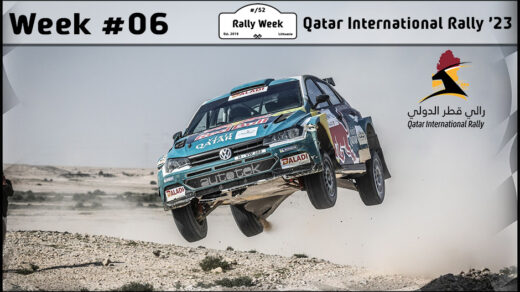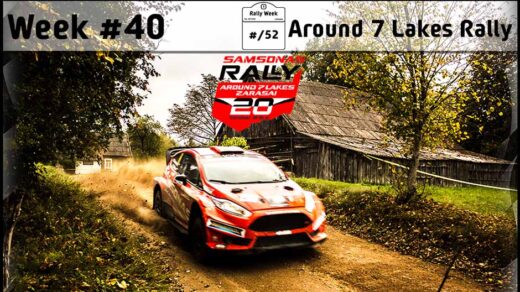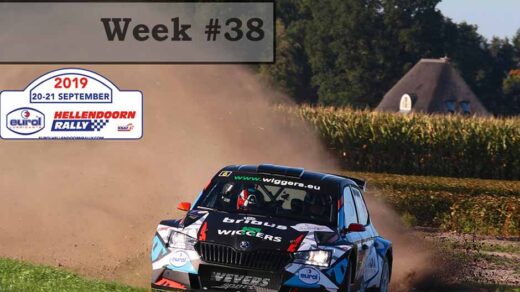Overview of the first round of the Latvian and Estonian Rally Championship 🙂



The season is finally open in our region. While the Scandinavians and southerners brought out their sports cars as soon as the new ones arrived, the Baltic racers had to wait until mid-January. When that time arrived, around 90 crews were welcomed in the north of Latvia, in the town of Alūksne. This one of the two winter rallies in Latvia was the event of the Latvian-Estonian championship, as the Estonians had included this rally in their championship calendar again. Many Lithuanians also accepted the challenges of real winter, even a dozen of them made their way north.

What the northern Latvians have – the roads. The roads there are really wonderful and it is not surprising that even two rallies take place in the same region – the Alūksne Rally around Alūksne, the Sarma Rally around Gulbene. These two places are about 40 kilometers apart. As it gets dark early, night is an unavoidable attribute of these rallies. The organizers of the rally even used the night twice – on Friday and Saturday two special stages were driven after dark. Another 6 SS – during the day, and all this added up to a nice figure of 92.92 kilometers. More than 300 kilometers were covered during the liaison because there were many service zones. The special stages themselves are very tight with lots of snow. Even the slightest mistake by a not-uncommon participant resulted in a significant loss of time trying to get out of the clutches of the snow. These mistakes were easy to make due to the extremely twisty roads and fairly steep, hilly terrain and forests.

Incidentally, Latvians doing things differently from Lithuanians. For example, the historic cars are started in front of the main channel of the rally. This has many advantages – really unique cars get much more attention. Also, they are on a much better road condition and it does not become another survival competition for them. Another interesting thing is the youth with Rally4 cars. They went from slowest to fastest after the first fourteen in Alūksne. Maybe it’s because it was also a stage of the Estonian Rally Championship, but the principle itself is interesting – to have the Rally4 youth drive in a group right after the fastest AWD cars. While in Lithuania it is common for spectators to park their cars where it is most convenient for them, in Latvia all spectator cars are parked nicely on one side of the road, leaving enough space for the transportation of special services. This matter is supervised by separate security personnel.

As far as the participants are concerned, crews from four different countries have been allocated the first four starting numbers. The Estonian runner-up Priit Koik with the Škoda Fabia Rally2 Evo started in first place, the second – the fastest Mitsubishi Lancer Evolution driver in Wolrd, Emils Blums with the Mitsubishi Lancer Evolution IX. The third starting number went to Jarosław Kołtun from Poland, who in the last season had 24 races throughout Europe. The fourth number was the Hyundai i20 VRT of the MV Sport team, whose “keys” for the first proper rally were handed over by Mindaugas Varža to the Lithuanian rally champion Martynas Samsonas. There were other interesting participants – Rokas Steponavičius brought a newly purchased Škoda Fabia R5, two fastest Estonians on Ford Fiesta Rally3 cars arrived – FIA Rally Star participant Romet Juergenson and Patrick Enok. The suspension developed by the same Mindaugas Varžas was also used in Ramūnas Čapkauskas’ Mitsubishi Lancer Evolution IX, with which Ramūnas and his son arrived in Latvia. Kalvis, the brother of the fast Emil Blums, also appeared in his home country with a Mitsubishi Lancer Evolution VI. The Lithuanians came with modern Rally4 equipment and with historic cars.

When the competition began, it became clear that Estonian Priit Koik, despite getting the first starting number, was not in contention to win the rally – for some reason, he was not particularly fast this weekend. Local Emils Blūms, on the other hand, had no such problems and tried throughout the rally to catch Martynas Samsonas, who had got into a new car. Although his only goal was to finish and gather information about the car, man from Utena natural speed was enough to keep him in the lead for most of the rally. In the final special stage, however, Emils pushed up and overtook the Lithuanian crew by almost nine seconds. That was enough to turn the tables, and the rally winner’s trophy remained in Latvia with a half-second lead. Of course, it must be mentioned that Martynas had left the starting line 0.02 seconds too fast on the first day of the rally, which cost him a 10-second penalty and, as it turned out later, the victory. The extremely winding roads of Alūksne suited the Rally3 cars very well, so Patrick Enok and Romet Juergenson got very close to the leaders of the rally and even won several stages. There was a fierce battle for fifth place and after the finish on the final stretch, the Baltic trio – Janis Vorobjovs, Rokas Steponavičius and Priit Koik – were separated by just three seconds. Rokas really picked up the pace in the final stage and reclaimed the place from Estonian, but he was only 1.27 seconds off fifth-placed Janis.

Estonian youth reigns supreme in the Baltics when it comes to front-wheel drive cars. It was no different in Alūksne, where the first six places went to Estonian drivers. Jasper Vaher – a name to remember. He has already won another trophy and you can expect great results from him. Jasper not only won the class, but remained in 9th place overall with a Ford Fiesta Rally4, half a minute ahead of his compatriot Joosep Planken with the same car. While the front-wheel drive car easily finished in the top ten, the fastest RWD car was only 23rd with Markus Abram at the wheel of a BMW M3 E46 compact.

The next event of the Latvian Rally Championship is not far away, and almost in the same place. Gulbene is only half an hour’s drive away from Alūksne. We may also see Lithuanians there. The action takes place there on February 10. The format is also one of the more interesting – three long special stages are driven twice.

Photos – Vilius Šaltenis












